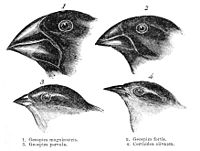
Photo from wikipedia
Recently, several concerns have been expressed on red meat quality and consumption. The aims of this study were to evaluate the influence of different breeding techniques and a prolonged post… Click to show full abstract
Recently, several concerns have been expressed on red meat quality and consumption. The aims of this study were to evaluate the influence of different breeding techniques and a prolonged post dry aging (PDA) maturation process on biomolecules level in raw buffalo meat. In the first experiment, two groups of animals were maintained with different space availability (15 vs. 10 m2/animal) for 90 days and biomolecules content was evaluated. In experiment 2, two diets (with or without ryegrass green forage) were used to assess the concentration of these biomolecules. Finally, in experiment 3, the meat of the animals that showed the highest content of biomolecules was chosen to assess the influence of the PDA maturation process. Buffaloes reared at 15 m2 showed a significantly (p < 0.05) higher content of the considered biomolecules compared with their counterparts. Similarly, buffaloes fed green forage showed higher content of biomolecules (p < 0.05) compared with the control group. The meat of the animals bred at 15 m2 and fed green forage showed a significant (p < 0.01) increase of biomolecules content during the PDA maturation process up to 60 days without influence microbiological profile in terms of total aerobic bacterial counts, yeasts, and molds. In conclusion, breeding techniques and PDA maturation system could enhance biomolecules levels in terms of quality, without affect health standards.
Journal Title: Veterinary Sciences
Year Published: 2021
Link to full text (if available)
Share on Social Media: Sign Up to like & get
recommendations!